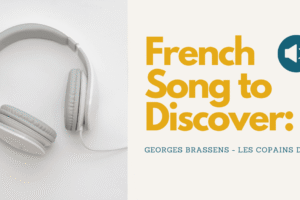
Why the Pace of Real French Matters
- Posted by thewaystofrench.com
- Categories Blog
- Date 8 April 2025
- Comments 0 comment
In recent years, many French YouTube channels have started offering videos where French is spoken at a very slow pace, targeting beginners. While this can feel comfortable in the short term, is it the most effective way to learn real French in the long run? This approach, though useful for initial exposure, may not truly reflect the reality of the language. Let’s explore why listening to French spoken at a natural pace is essential for language learners, and how it prepares you better for actual conversations in France.
The Importance of Listening to Natural French
When you first started learning a language, whether it was your native tongue or a foreign one, you didn’t begin by hearing it spoken slowly or in an overly simplified form. Instead, you were immersed in everyday conversations around you. Your brain made connections naturally over time, without modification to the speed or complexity of sentences. This phenomenon is known as language immersion, and it plays a crucial role in language acquisition.
Studies show that real-life exposure to language—through listening, reading, and speaking—strengthens the brain’s ability to form neural connections and build vocabulary. This is why children can acquire their first language effortlessly, without any need for slowed-down speech. They are simply absorbing the language as it is used around them.
Why Slow French Can Be a Crutch for Beginners
While slow French videos can initially help beginners by giving them a clearer understanding of individual words, they may not be doing enough to prepare learners for real-life conversations. Slow speech doesn’t reflect the natural rhythm and complexity of spoken French. As a result, students who rely too heavily on these resources might find themselves overwhelmed when they hear real French spoken at a regular pace.
Research in language acquisition supports the idea that gradually increasing the speed of the language you’re exposed to is a better long-term strategy. It’s not just about slowing down, but increasing the difficulty as you progress. Immersing yourself in authentic content helps your ear become accustomed to the nuances of the language, including:
Faster speech rates
Uncommon expressions and colloquial phrases
Intonation and stress patterns
How to Gradually Transition to Real French
It’s important to ease into this transition, but don’t be afraid of it. Here’s how to make the shift from slow French to real French:
Start with Real French Content
Watch TV shows, movies, and YouTube channels that use natural French, but at first, turn on subtitles. French cartoons and documentaries are great for beginners because the sentences may be less complex, and the vocabulary may be simpler, but it’s still real French. Cartoons, in particular, have a visual component that helps the brain make connections between words and actions, making it easier to understand the meaning. We’ve even listed our favorite French YouTube Channels for Kids, which are ideal for this transition. Choose content that interests you to make learning more enjoyable.Practice Active Listening
Don’t just listen passively. Take notes, pause when necessary, and replay sections to ensure you understand the meaning and context. Active listening helps retain new vocabulary and grammatical structures.Increase the Difficulty Gradually
As your understanding improves, start increasing the difficulty by listening to more complex material. You can gradually speed up the videos, move from children’s content to documentaries or podcasts, and incorporate news segments or series in French. This will ensure that you don’t get stuck at the beginner level and help you prepare for real conversations in France.Incorporate French in Daily Life
Expose yourself to French throughout your day. Listen to French radio, podcasts, or YouTube while commuting or cooking. This builds familiarity and helps you feel more comfortable with real-world conversations.Speak with Native Speakers
Whenever possible, practice speaking with native speakers, whether through language exchanges, online conversation partners, or immersion trips. Real conversations will teach you things that videos and books can’t.
At The Ways to Teach, We Don't Follow the Slow French Trend
At The Ways to Teach, we take a different approach to learning French. Based on both professional experience as language teachers and our personal experience as a multilingual family, we believe that listening to real, natural French is key to truly mastering the language.
We don’t follow the trend of slow, simplified French content because, while it may seem comforting at first, it doesn’t provide the true challenge needed to grow your skills in the long term. Our teaching methods focus on gradually increasing the difficulty, while exposing learners to real French that mirrors how it’s spoken in everyday situations. This immersive approach not only builds a strong foundation but also prepares you for practical use when you’re in a French-speaking environment.
The Benefits of Real French Exposure
By committing to listening to real French, you’ll reap several long-term benefits:
Improved listening comprehension: As your ear becomes trained, you’ll be able to pick up on the nuances of the language.
Increased confidence: When you can understand spoken French at a normal pace, you’ll feel more at ease in real conversations.
Enhanced vocabulary: Real French introduces you to everyday vocabulary and expressions that you won’t find in textbooks.
Conclusion
While slow French videos may seem helpful at first, they’re not a substitute for natural, real-world language exposure. To truly master French and prepare for life, study or travel in France, you need to train your brain to understand and engage with French as it’s spoken in everyday life.
By gradually incorporating authentic French content into your learning routine—starting with children’s cartoons and increasing the difficulty—you’ll build the skills needed to understand and speak the language with confidence. Remember, learning French is about more than just understanding words—it’s about immersing yourself in the rhythm and culture of the language.
Any learner should be patient with themselves—acquiring a new language is a long-term process that requires commitment and regularity. Just think about how many years it took to master your own language. With consistent effort and a focus on real French, you’ll make steady progress and achieve fluency in time.
You may also like

French Song to Discover: Les Copains d’abord

The Power of Fun in French Learning

